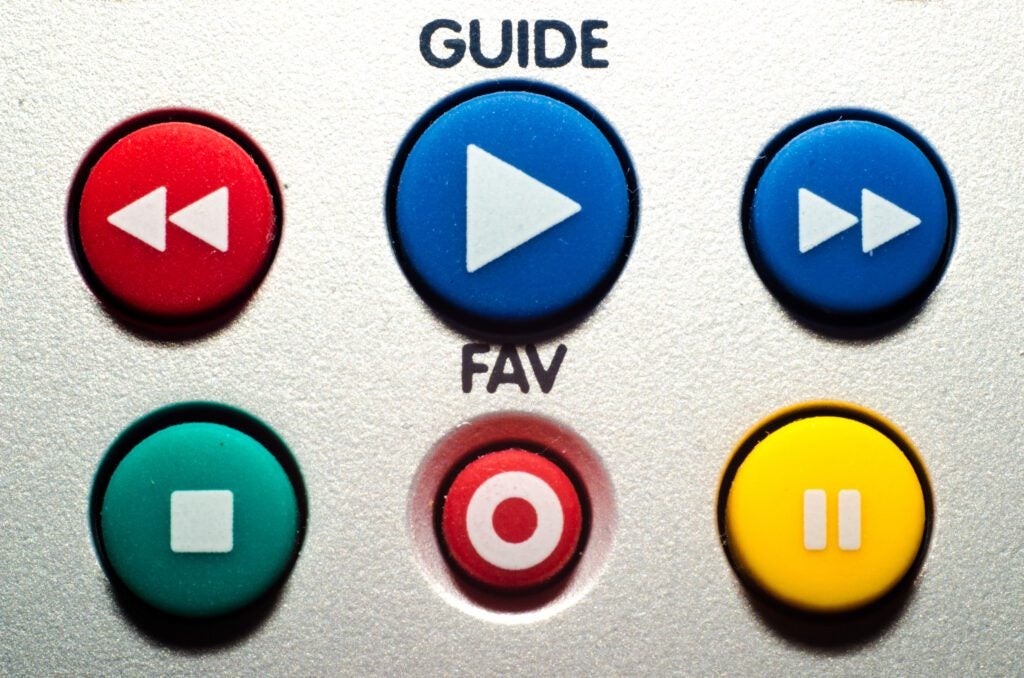Magnite is making a play for pause ads.
On Tuesday, the advertising platform announced the introduction of pause ads into its SSP. This inventory can be bought through the company’s direct-to-buyer product, ClearLine, as well as a number of third-party buyers and DSPs like MNTN, Kerv.ai and Yahoo DSP.
Magnite’s pause ads will be available on a programmatic basis across several streaming partners, including DirecTV, Dish Media and Fubo. They will also be scalable across multiple providers that use the same ad format and can include some interactive capabilities.
The implementation of pause ads represents an important step forward for the CTV industry as it coalesces around more standardized, interchangeable formats for digital ads.
A VAST expanse
Magnite’s road to pause ads began in 2022, when the company first introduced native home screen and tile ads into its SpringServe platform. (To this day, Magnite claims it is the only third-party ad server that can deliver on the tile format.)
Pause ads proved a slightly trickier engineering task after tile ads, as each media owner is at a different stage of development on the format. Some have built out those features with native specs, while others use the more standardized VAST (video ad serving template), requiring Magnite to be more “agnostic” about how it implements with each publisher, said Magnite SVP Michael Laband.
However, compared to other types of CTV ad innovations, Laband said, pause ads are fundamentally a bit easier to standardize, especially now that more providers are gravitating toward a VAST framework.
“It’s really the same across multiple different types of media owners, and therefore you have that commonality a little more out of the box,” said Laband.
Hold for a pause
DirecTV is a relatively early adopter of pause ads; it first began developing with the format about four or five years ago, according to DirecTV SVP Matthew Van Houten. The programmer is also one of 40 companies that’s been collaborating with the IAB Tech Lab on standardization efforts and was one of the first media providers to begin working with Magnite on programmatic availability.
Part of the excitement over pause ads stems from how desensitized viewers have become to the typical in-video ad format, said Van Houten. (Ironically, that may also be why ad-supported models have achieved such success over the last few years; SVOD is a novelty compared to 70 years of broadcast and cable tradition.)
Although industrywide statistics are hard to come by, DirecTV’s internal numbers paint an interesting picture of how its users interact with the pause feature across broadcast, cable, live and VOD content. Not surprisingly, the more users are engaged by what they’re watching, the more likely they are to pause it, presumably because they don’t want to miss anything.
One in three DirecTV customers reportedly pause on a daily basis, and two out of three use it at least weekly. And it’s not all bathroom breaks like you’d expect, either; half the time (55%), it’s because they’re using their second-screen device. For one in four, it’s specifically because they’re composing a text message.
Those second-screen findings are especially exciting to DirecTV, said Van Houten, because they lend credence to the potential of interactive or shoppable pause ads.
Pause and effect
Advertiser interest in pause ads is currently uniform across industry verticals, particularly among brands that are looking for quick performance-based conversions, said Van Houten. He also noted that media publishers are especially interested in interactive “tune in” formats, which invite users to set up a DVR recording or watch VOD episodes of a particular show. (This format, however, can only be bought through DirecTV and not through programmatic means.)
On the Magnite side of things, Laband said the platform has seen a lot of interest from agencies, which view pause ads as a new-new opportunity that can take advantage of innovation budgets.
As pause ads become more programmatically available, Van Houten expects there to be much more demand among small and local businesses, mirroring the last big CTV trend of self-service buying.
But before the industry can get to that point, first it has to make programmatic buying easier and more adoptable in the first place.
“It’s going to take time to see that shift,” said Laband.


















